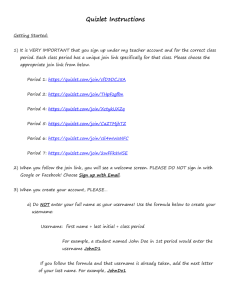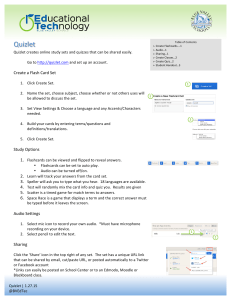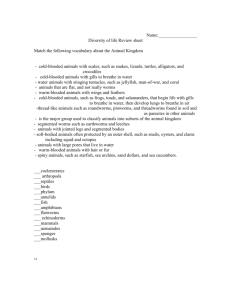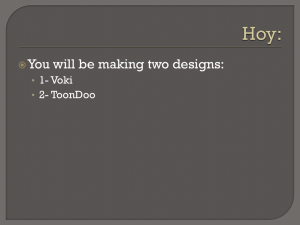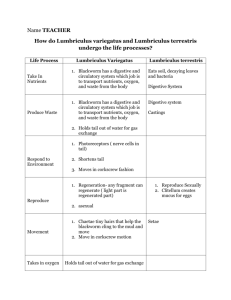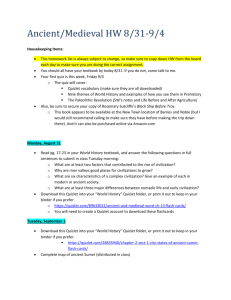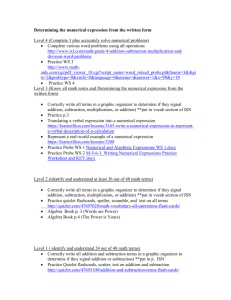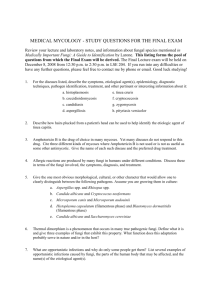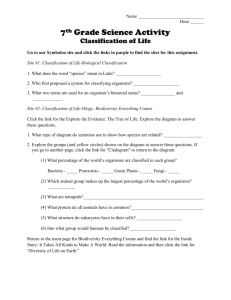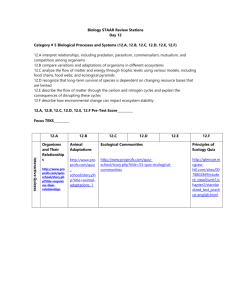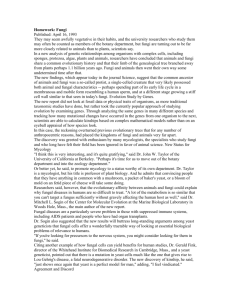Biodiversity Review Sheet with answers
advertisement
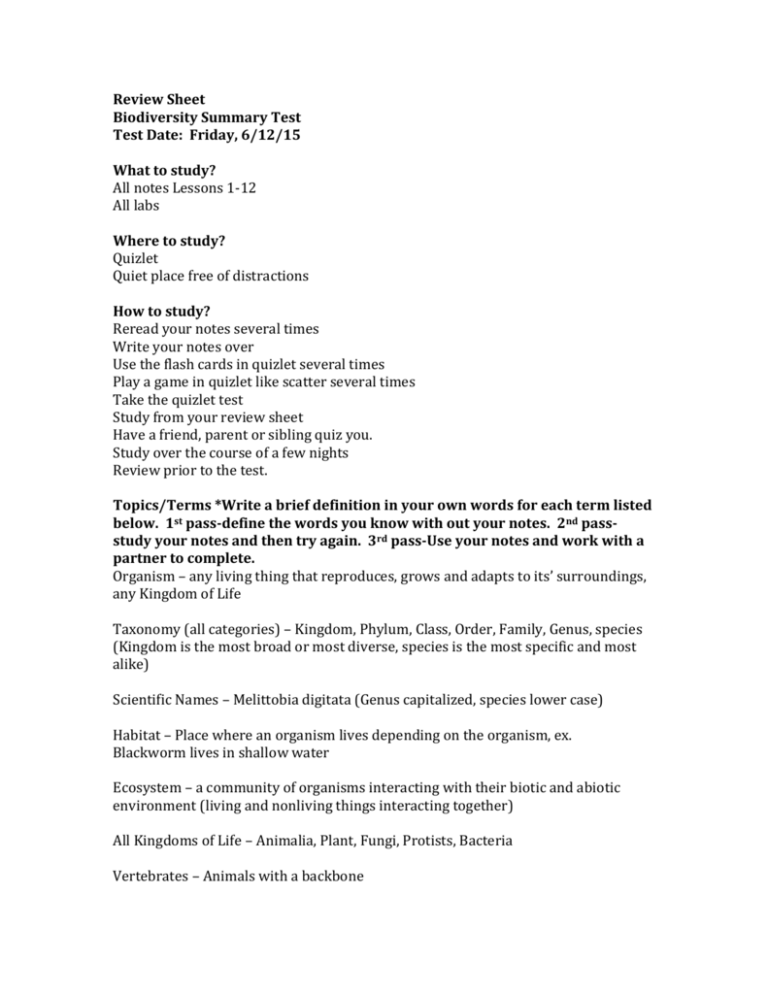
Review Sheet Biodiversity Summary Test Test Date: Friday, 6/12/15 What to study? All notes Lessons 1-12 All labs Where to study? Quizlet Quiet place free of distractions How to study? Reread your notes several times Write your notes over Use the flash cards in quizlet several times Play a game in quizlet like scatter several times Take the quizlet test Study from your review sheet Have a friend, parent or sibling quiz you. Study over the course of a few nights Review prior to the test. Topics/Terms *Write a brief definition in your own words for each term listed below. 1st pass-define the words you know with out your notes. 2nd passstudy your notes and then try again. 3rd pass-Use your notes and work with a partner to complete. Organism – any living thing that reproduces, grows and adapts to its’ surroundings, any Kingdom of Life Taxonomy (all categories) – Kingdom, Phylum, Class, Order, Family, Genus, species (Kingdom is the most broad or most diverse, species is the most specific and most alike) Scientific Names – Melittobia digitata (Genus capitalized, species lower case) Habitat – Place where an organism lives depending on the organism, ex. Blackworm lives in shallow water Ecosystem – a community of organisms interacting with their biotic and abiotic environment (living and nonliving things interacting together) All Kingdoms of Life – Animalia, Plant, Fungi, Protists, Bacteria Vertebrates – Animals with a backbone Invertebrates – Animals with out a backbone Classes of Vertebrates Mammalia – mammals warm-blooded animals that nurse their young Reptilia – reptiles or cold-blooded animals w/scales and lay eggs on land Amphibia – Amphibians are cold-blooded part of life in water and land, breathe through gills when young and lungs when they are adults Aves – birds warm-blooded with feathers and hollow bones Pisces – fish cold-blooded, live in water, divided into jawless, bony & cartilage fish Prokaryotic – contains no nucleus or membrane bound organelles (Bacteria) Eukaryotic – contain a nucleus and membrane bound organelles (Animals, Plants, Fungi, and Protists ) Plant Cell parts – Cell wall (extra protection), Larger Vacuole (stores water), and Chloroplast (to undergo photosynthesis) Animal Cell parts – only have a cell membrane, several smaller vacuoles Decomposers – organisms like bacteria and fungi that break down plants and animals, break down waste Fermentation – yeast feed on dough, reproduce and excrete carbon dioxide and alcohol. Respiration – yeast eat the alcohol and use oxygen for energy to grow and reproduce. WOWBug – Melittobia digitata, parasitic wasps, grooms itself Blackworm (Lumbriculus) – Lumbriculus variegatus, heart rate, cut and were able to see it regenerate, asexual reproduction Daphnia – Daphnia, transparent water flea, heart rate, reacted to alcohol – slowed the heart rate down (depressant), cola – stimulant raised the heart rate. Hydra – Cnidarian like a jellyfish, and it buds or reproduces asexually. Yeast – One-celled Fungi, used to make bread and alcohol, reproduce asexually.
